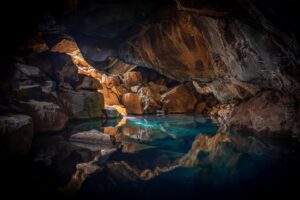Top 7 Largest Continents in the World
Top 7 Largest Continents in the World
WhiteClouds builds 3D Raised Relief Maps
Did you know we make
3D raised-relief maps
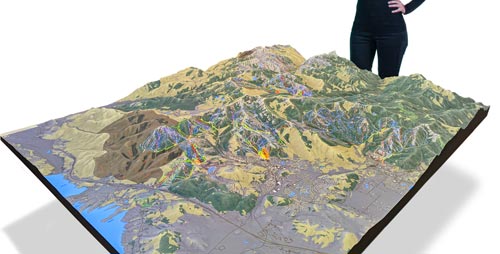
and
3D raised-relief maps
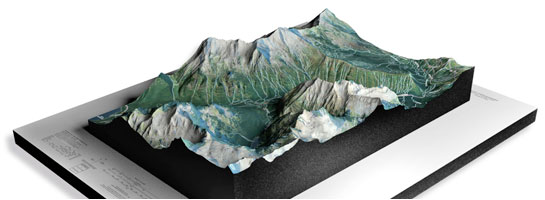
Our planet is a treasure trove of diversity, majesty, and beauty. It comprises seven fascinating continents, each with its distinct characteristics, making them distinct worlds within our world. These top 7 continents – Asia, Africa, North America, South America, Antartica, Europe, and Australia – offer endless exploratory possibilities with their unique geographical features, biodiversities, cultures, histories, and people.
#1: Asian Continent (17,212,048 Square Miles)
Asia, the world’s largest and most populous continent, is a melting pot of cultures, religions, and history. Home to some of the world’s earliest civilizations, it boasts a rich historical tapestry from the Great Wall of China to India’s Taj Mahal. Its vast landscapes include the highest mountains, the deepest sea, arid deserts, lush forests, and populous cities.
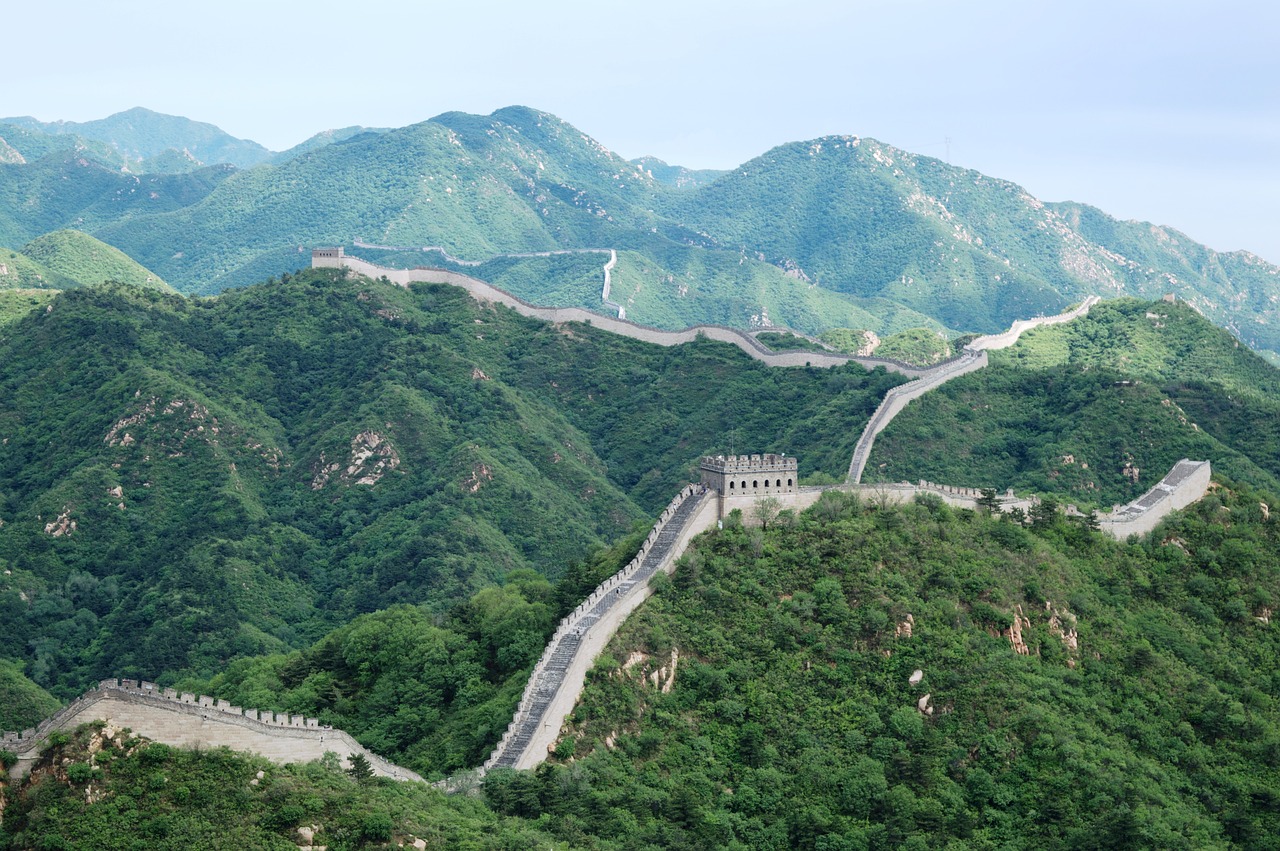
Size: Asia is the Earth’s largest continent, covering approximately 44.58 million square kilometers (or about 17.21 million square miles), which is about 30% of the world’s total land area.
Population and Density: Asia is home to an estimated 4.5 billion people as of 2023, accounting for approximately 60% of the world’s population. The population density is about 100 inhabitants per square kilometer, but this varies widely across the continent, from very high densities in South and East Asia to some of the world’s most sparsely populated regions in the North and Central Asia.
Tallest and Lowest Points: Asia is the continent of extremes. The tallest point on Earth, Mount Everest, resides in the Himalayan range on the Nepal-China border, standing at a staggering 8,848.86 meters (29,031.7 feet) above sea level. The continent’s lowest point, the Dead Sea Depression, sits at 429 meters (1,407 feet) below sea level, located on the border of Jordan and Israel.
Rivers: Asia is crisscrossed by some of the longest rivers globally. The Yangtze River in China is the continent’s longest river, stretching over 6,300 kilometers (3,917 miles). The Brahmaputra River, which flows through China, India, and Bangladesh, is among the widest, reaching up to 20 kilometers (12.4 miles) in parts. The continent houses hundreds of thousands of rivers, each contributing to its unique and diverse ecosystems.
Lakes: There are countless lakes across Asia, varying widely in size, depth, and ecological importance. The largest by surface area is the Caspian Sea, a landlocked endorheic lake between Europe and Asia, covering around 371,000 square kilometers (143,000 square miles). Lake Baikal in Siberia, Russia, holds the title of the world’s deepest lake, with a maximum depth of approximately 1,642 meters (5,387 feet).
Deserts: Asia houses numerous deserts, ranging from the cold deserts of Siberia to the hot deserts of the Middle East. The Gobi Desert in Mongolia and China is the largest Asian desert. The Lut Desert in Iran is often considered one of the hottest places on Earth, with surface temperatures exceeding 70°C (158°F).
Major Cities: Asia contains many of the world’s most populous cities. Tokyo, the capital of Japan, tops the list, followed by Delhi in India and Shanghai in China. Other significant urban centers include Mumbai, Beijing, Dhaka, and Jakarta.
Religions: Asia is the birthplace of many of the world’s major religions, including Hinduism, Buddhism, Confucianism, Taoism, Judaism, Christianity, and Islam. These religions continue to have a profound impact on the continent’s cultural, societal, and political landscapes.
Cultures and Languages: Cultural diversity in Asia is immense, with a rich tapestry of traditions, cuisines, arts, music, and social norms. The continent is home to over 2,300 spoken languages. Major languages include Mandarin, Hindi, Bengali, and Arabic, but there are many other regional and minority languages.
Climate-Average Temperature and Rainfall: Asia’s climate is as diverse as its landmass, ranging from Arctic conditions in Siberia to the tropical climates of Southeast Asia. The average temperature varies accordingly, from below freezing in the northern regions to around 28°C (82°F) in the south. Average annual rainfall is equally diverse, from the arid deserts receiving less than 10 inches per year to the wettest place on Earth, Mawsynram in India, receiving over 433 inches annually.
Biodiversity: Asia’s biodiversity is abundant, housing a plethora of unique and diverse plant and animal species. From the Siberian tiger in the far east Russia to the Indian rhinoceros in the Nepalese lowlands, and from the cedar forests of Lebanon to the mangroves of Sundarbans, Asia’s biodiversity is crucial for the global ecosystem.
Countries: Countries within the Asian continent (by size) are Russia, China, India, Kazakhstan, Saudi Arabia, Iran, Mongolia, Indonesia, Pakistan, Turkey, Myanmar, Afghanistan, Yemen, Thailand, Turkmenistan, Uzbekistan, Iraq, Japan, Vietnam, Malaysia, Oman, Philippines, Laos, Kyrgyzstan, Syria, Cambodia, Bangladesh, Nepal, Tajikistan, North Korea, South Korea, Jordan, Azerbaijan, United Arab Emirates, Georgia, Sri Lanka, Bhutan, Taiwan ,Armenia, Israel, Kuwait, East Timor, Qatar, Lebanon, Cyprus, Maldives, Brunei, Bahrain, Singapore, and Palestine.
Economics and Industries
Asia’s economy is as diverse as its geography and culture, with industries ranging from agriculture and manufacturing to high technology.
China: As the world’s second-largest economy, China is a global leader in several industries, including manufacturing, technology, and agriculture. It’s known for its production of goods such as electronics, machinery, textiles, and steel.
Japan: Japan boasts the third-largest economy in the world. Its economy is known for its automobile manufacturing, sophisticated electronics industry, and robust services sector, including finance, insurance, and real estate.
India: India’s economy is characterized by a mix of traditional agriculture, modern agriculture, handicrafts, a wide range of industries, and a multitude of services. Information technology and software services have been major drivers of India’s economic growth in recent years.
Middle Eastern Economies: The Middle East, particularly Saudi Arabia, United Arab Emirates, and Iran, have economies that revolve primarily around oil production. However, efforts are being made to diversify their economies, particularly into areas like tourism and finance.
Historical Highlights
Asia’s historical narrative is characterized by the rise and fall of empires, cultural evolution, and significant transformations.
Ancient Civilizations: Asia was home to several of the world’s earliest civilizations, including the Indus Valley Civilization in South Asia, the Chinese civilization along the Yellow River, and the Mesopotamian civilization in the Middle East.
Classical Age: The Classical Age in Asia saw the rise of significant empires such as the Maurya and Gupta Empires in India, the Han and Tang Dynasties in China, and the Persian Empire in the Middle East.
Middle Ages and Early Modern Period: This era witnessed the Islamic Golden Age, the establishment of the Mongol Empire, the flourishing of the Khmer Empire in Southeast Asia, and the Edo period in Japan.
Colonialism and Independence: From the 16th to the mid-20th century, many parts of Asia fell under European colonial rule. The mid-20th century saw waves of decolonization and independence movements across Asia.
Unique and Interesting Stories
Asia’s rich history and cultural diversity have resulted in countless fascinating stories and events:
The Silk Road: An ancient trade route connecting the East and West, the Silk Road was not just a conduit for silk, spices, and other goods but also for ideas, technologies, and cultural exchange.
The Great Wall of China: An architectural marvel, the Great Wall was built over centuries to protect China from invasions. It’s one of the most significant symbols of China’s historical propensity for grand-scale works.
The Discovery of the Terracotta Army: In 1974, farmers near Xi’an, China, accidentally discovered an underground vault containing thousands of life-sized terracotta soldiers that were buried with China’s first emperor, Qin Shi Huang. It’s considered one of the greatest archaeological finds of the 20th century.
The Transformation of Dubai: In just a few decades, Dubai transformed from a small fishing village to a gleaming metropolis and global hub for tourism, finance, and luxury living, embodying the rapid development of the United Arab Emirates.
The Asian Continent, with its sheer size and diversity, continues to be a land of fascination and discovery. It is #1 on our list of Top 7 Largest Continents. Its rich tapestry of cultures, languages, religions, and ecosystems provides a profound reminder of our planet’s incredible diversity.
#2: African Continent (11,725,923 square miles)
Often referred to as the ‘cradle of humankind’, Africa is known for its stunning savannas, vast deserts, tropical rainforests, and rich cultural heritage. The African continent is the second-largest continent and offers some of the most dramatic geographic contrasts on Earth, from the scorching Sahara Desert to the lush Congo rainforests. Africa’s rich history is seen in Egypt’s ancient pyramids, the rock churches of Ethiopia, and more. The continent is also a paradise for wildlife enthusiasts, with the Serengeti, Kruger National Park, and Okavango Delta housing some of the planet’s most diverse ecosystems.
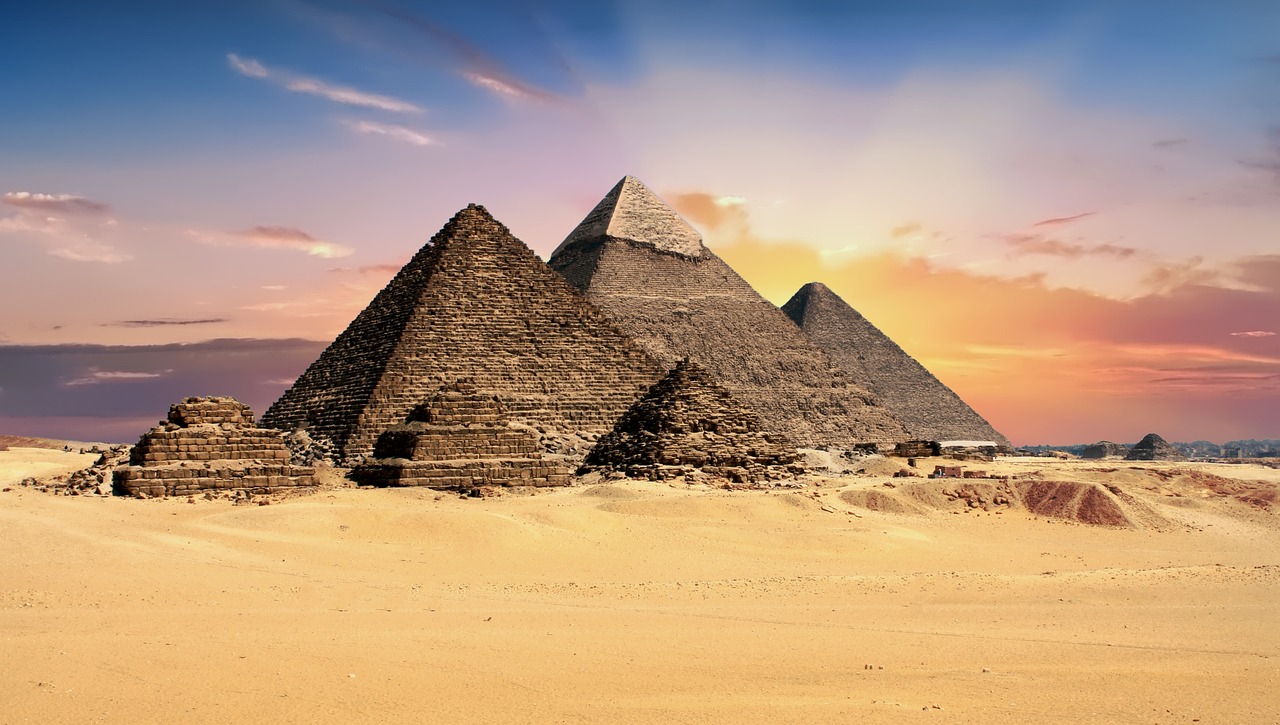
Size: Covering approximately 30.37 million square kilometers (or about 11.7 million square miles), Africa accounts for about 20% of the Earth’s total land area.
Population and Density: With a population exceeding 1.3 billion people as of 2023, Africa houses about 16% of the world’s population. The overall population density is around 43 inhabitants per square kilometer, but this varies widely across the continent, with the highest densities found in the eastern and northern regions.
Tallest and Lowest Points: Africa’s geography is varied and diverse. The highest point is Mount Kilimanjaro in Tanzania, standing at 5,895 meters (19,341 feet) above sea level. The lowest point is Lake Assal in Djibouti, lying 155 meters (509 feet) below sea level.
Rivers: The Nile River, flowing through eleven countries, is the longest river in Africa and the world, stretching approximately 6,650 kilometers (4,130 miles). The Congo River is renowned for its width, reaching up to 15 kilometers (9.3 miles) in places. Africa’s rivers, thousands in number, are crucial for the continent’s diverse ecosystems.
Lakes: Africa is known for its large and numerous lakes. Lake Victoria, shared by Uganda, Kenya, and Tanzania, is the largest by surface area in Africa and the second-largest freshwater lake in the world, spanning approximately 69,485 square kilometers (26,828 square miles). Lake Tanganyika, bordering four countries, is the world’s second deepest lake, reaching depths of approximately 1,470 meters (4,823 feet).
Deserts: Africa is home to several deserts, including the Sahara, the world’s largest hot desert, covering an area of approximately 9.2 million square kilometers (3.55 million square miles). The Danakil Desert in Ethiopia is one of the hottest places on Earth in terms of year-round average temperatures.
Major Cities: Africa is home to many bustling and rapidly developing cities. Lagos in Nigeria is the most populous, followed by Kinshasa in the Democratic Republic of the Congo, and Cairo in Egypt. Other major cities include Johannesburg, Nairobi, and Addis Ababa.
Religions: Religion in Africa is diverse, with Islam and Christianity being the most widely professed. Many Africans also follow traditional African religions, often in syncretism with Christianity or Islam. There are also substantial Hindu, Baha’i, and Jewish communities on the continent.
Cultures and Languages: Cultural diversity in Africa is immense, with a rich array of traditions, music, art, and social norms. There are an estimated 2,000 languages spoken in Africa. Major languages include Arabic, Swahili, Hausa, Yoruba, Amharic, and Zulu.
Climate: Average Temperature and Rainfall: Africa’s climate ranges from tropical to arid. The average temperature across the continent is approximately 20-30°C (68-86°F), with desert regions much hotter. Average annual rainfall varies widely, from less than 1 inch (20mm) in the driest regions to over 79 inches (2,000mm) in the wettest.
Biodiversity: Africa is renowned for its biodiversity. From the savannas of the Serengeti teeming with wildebeest, zebras, and big cats, to the tropical rainforests of the Congo Basin housing gorillas, chimps, and elephants, the biodiversity of the continent is critical for the global ecosystem.
Countries: Countries within the African continent (by size) are Algeria, Democratic Republic of the Congo, Sudan, Libya, Chad, Niger, Angola, Mali, South Africa, Ethiopia, Mauritania, Egypt, Tanzania, Nigeria, Namibia ,Mozambique, Zambia, Morocco, South Sudan, Somalia, Central African Republic, Madagascar, Botswana, Kenya, Ivory Coast, Cameroon, Republic of the Congo, Uganda, Senegal, Zimbabwe, Guinea, Burkina Faso, Gabon, Eritrea, Ghana, Guinea-Bissau, Lesotho, Equatorial Guinea, Malawi, Sierra Leone, Togo, Benin, Tunisia, Liberia, Djibouti, Rwanda, Gambia, Cape Verde, Comoros, Mauritius, Swaziland, and Seychelles.
Economics and Industries
The economic activities in Africa are as diverse as its 54 countries. While the continent has traditional sectors like agriculture and mining, it’s also witnessing significant growth in technology, telecommunications, and services.
Nigeria: Nigeria has the largest economy in Africa, and it’s known for oil exports. However, it also has a rapidly growing entertainment industry known as Nollywood, which has become the second largest film industry by volume globally.
South Africa: Known for its mining industry, South Africa is a world leader in gold mining. Other sectors, including manufacturing, retail, financial services, and communications, are also significant contributors to the economy.
Egypt: As one of the most diversified economies in Africa, Egypt has a vibrant service sector with industries like tourism, telecommunications, and banking. It also has a robust agriculture sector, producing crops like cotton and rice.
Ethiopia: One of the fastest-growing economies globally, Ethiopia has made strides in manufacturing and horticulture exports. It is also the leading coffee and honey-producing country in Africa.
Historical Highlights
Africa’s history is a rich tapestry of civilization, resistance, independence, and transformation.
Ancient Civilizations: Africa was the cradle of humankind and saw the rise of some of the world’s first civilizations. The Egyptian civilization along the Nile Valley, for example, has left a lasting legacy with its pyramids, hieroglyphs, and discoveries in science.
African Empires: From the 5th to the 15th century, Africa saw the rise and fall of powerful empires such as Mali, Ghana, and Songhai in West Africa, and Great Zimbabwe in Southern Africa.
Colonial Period and Slave Trade: From the late 15th to the 20th century, Africa experienced the brutality of the transatlantic slave trade and European colonization, which significantly impacted its demographic, social, and political fabric.
Independence Movements: The mid-20th century was marked by a wave of anti-colonial struggles and independence movements across Africa, resulting in the formation of new independent nations.
Unique and Interesting Stories
Africa’s rich cultural heritage and historical depth have given birth to countless engaging narratives:
Timbuktu’s Golden Age: In the 15th and 16th centuries, Timbuktu, in present-day Mali, was an intellectual and cultural center of the world. It was home to an extensive library of manuscripts covering topics from science to philosophy, underscoring Africa’s scholarly legacy.
The Story of Queen Nzinga: In the 17th century, Queen Nzinga of Ndongo and Matamba (in present-day Angola) is remembered for her diplomatic savvy, military tactics, and resistance against the Portuguese.
The Great Migration: The annual Great Migration in East Africa is one of nature’s most awe-inspiring events, where over a million wildebeest, zebras, and other antelope traverse the Serengeti and Maasai Mara ecosystems in search of greener pastures.
Africa’s Technological Leapfrogging: Africa is known for “leapfrogging,” a term used when the lack of existing infrastructure leads to the adoption of advanced technology. An example is the widespread use of mobile money platforms like M-Pesa in Kenya, which have revolutionized digital banking.
Africa, with its rich tapestry of cultures, languages, religions, and biodiversity, is an embodiment of diversity. It is #2 on our list of Top 7 Largest Continents. Its bustling cities, rich histories, diverse landscapes, and varied ecosystems showcase its unique place in the world. An understanding and appreciation of Africa’s nuances is crucial to understanding the continent’s contribution to our global heritage and future.
#3: North American Continent (9,540,198 square miles)
The North American Continent, a broad landmass located entirely within the Northern Hemisphere and almost entirely within the Western Hemisphere, is a vibrant tapestry of diverse geography, ecosystems, cultures, and languages. This diverse continent spans an intricate array of climates, geographies, flora, fauna, and human societies. The sheer magnitude of its diversity can only be truly understood when we delve into the details.

Size: With a total area of approximately 24.71 million square kilometers (or about 9.54 million square miles), North America is the third largest continent, after Asia and Africa. It extends from the Arctic Ocean in the north to the Caribbean Sea and the Isthmus of Panama in the south.
Population and Density: As of 2023, North America’s estimated population is around 600 million, making it the fourth most populated continent, trailing Asia, Africa, and Europe. The population density is roughly 24 inhabitants per square kilometer, reflecting the vastness of the land.
Tallest and Lowest Points: The tallest point in North America is Denali (Mount McKinley) in the United States, with a height of 6,190 meters (20,310 feet) above sea level. The lowest point is Death Valley in California, USA, 86 meters (282 feet) below sea level.
Rivers: The continent of North America boasts an impressive number of rivers. The Missouri River, a part of the Mississippi-Missouri river system, is the longest, spanning 3,767 kilometers (2,341 miles). The Mississippi River is renowned for being the widest, with its most substantial breadth reaching around 11 kilometers (7 miles). There are an estimated 250,000 rivers flowing across the continent, contributing to its rich biodiversity.
Lakes: North America is home to countless lakes, with the Great Lakes between the United States and Canada being the most well-known. Lake Superior, the largest of the Great Lakes, is the largest freshwater lake by surface area in the world, covering approximately 82,100 square kilometers (31,700 square miles). The Great Slave Lake in Canada’s Northwest Territories is the deepest, with a maximum depth of about 614 meters (2,014 feet).
Deserts: North America houses many deserts, with the Great Basin Desert in the United States being the largest, covering approximately 492,000 square kilometers (190,000 square miles). The hottest desert in North America, and indeed the world, is the Mojave Desert, home to the infamous Death Valley.
Major Cities: The continent is teeming with bustling cities and significant metropolitan areas. Mexico City in Mexico is the most populous, followed by New York City in the United States and Toronto in Canada. Other notable cities include Los Angeles, Chicago, Houston, Montreal, and Vancouver.
Religions: Religious beliefs across North America are diverse. Christianity remains the predominant religion in the United States, Canada, and Mexico. However, there is a considerable representation of other religious beliefs, including Islam, Judaism, Buddhism, and Hinduism, as well as indigenous religions in various regions.
Cultures and Languages: The cultural and linguistic landscapes of North America are exceptionally diverse, influenced by a long history of indigenous civilizations, colonization, migration, and cultural exchange. English, Spanish, and French are the most widely spoken languages. Yet, numerous indigenous languages persist, particularly in Mexico and parts of the United States and Canada.
Cultural practices and traditions vary extensively across regions, reflecting a rich tapestry of indigenous, immigrant, and colonial influences. This diversity contributes to a vibrant arts scene, with everything from music and dance to food and festivals.
Climate: Average Temperature and Rainfall: Climate in North America ranges from polar in northern Canada and Greenland, to tropical in parts of Mexico and the Caribbean. The average temperature can vary considerably, from well below freezing in the Arctic regions to around 24°C (75°F) in the tropical south. Average annual rainfall also varies significantly, from less than 10 inches (250mm) in the arid regions to over 157 inches (4,000mm) in the wettest.
Biodiversity: North America is teeming with a rich diversity of plant and animal species. It is home to over 15,000 species of vascular plants and an impressive array of wildlife, including mammals like the American bison, the grizzly bear, and the gray wolf. The continent also supports a variety of habitats, from the coral reefs of the Caribbean to the tundra of the Arctic, each hosting its unique ecosystem.
Countries: Countries within the North American continent (by size) are Canada, United States, Greenland, Mexico, Nicaragua, Honduras, Cuba, Guatemala, Panama, Costa Rica, Dominican Republic, Haiti, Belize, El Salvador, Jamaica, Trinidad and Tobago, The Bahamas, Dominica, Saint Lucia, Saint Vincent and the Grenadines, Grenada, Barbados, Antigua and Barbuda, and Saint Kitts and Nevis.
Economics and Industries
North America is an economic powerhouse, bolstered by two of the world’s largest economies, the United States and Canada, along with the rapidly developing economy of Mexico.
United States: The U.S. has the most diverse economy globally, with a mix of industries contributing to its gross domestic product (GDP). Key sectors include finance, health care, real estate, and professional and business services. The U.S. is also a leader in technology and innovation, with Silicon Valley serving as a global center for high technology and innovation.
Canada: Canada’s economy is known for its robust natural resources sector. Industries such as petroleum and mining are significant contributors to the nation’s wealth. However, the Canadian economy is also diverse, with sectors such as real estate, manufacturing, and finance playing significant roles.
Mexico: Mexico’s economy is a mix of modern and outdated industry and agriculture. The country is a major exporter of electronics, vehicles, and food products. Manufacturing, especially automotive and electronics, is a significant contributor to the nation’s GDP.
Historical Highlights
Pre-Colonial Period: The history of North America stretches back tens of thousands of years to the arrival of its first inhabitants through Beringia. Various indigenous civilizations flourished, including the Olmec, Maya, Aztec, Mississippian, and Inuit.
Colonial Period: Starting in the late 15th century, European powers, including Spain, Britain, and France, began exploring and colonizing North America. This period saw the establishment of colonies such as New France, the Thirteen Colonies, and New Spain.
Independence Movements and Nation Building: The late 18th and early 19th centuries saw the struggle for independence in North America. The United States won its freedom from Britain in 1776, followed by Mexico from Spain in 1821. Canada gained independence gradually, culminating in the Constitution Act of 1982.
20th Century: The 20th century was a transformative period for North America. Both World Wars, the Great Depression, the Civil Rights Movement, and the Cold War significantly impacted the continent’s political, economic, and social landscapes.
Unique and Interesting Stories
North America is a continent rich in intriguing stories and phenomena. Here are just a few:
Route 66: Established in 1926, Route 66 became one of the most famous roads in America, running from Chicago to Santa Monica. Although it was decommissioned in 1985, it continues to hold a place in American folklore and remains a symbol of America’s love affair with the open road.
The Klondike Gold Rush: The late 1890s saw gold discovered in the Klondike region of Canada’s Yukon Territory. This event triggered a migration of an estimated 100,000 prospectors, all dreaming of striking it rich.
The Manhattan Project: During World War II, the U.S. initiated the Manhattan Project, a top-secret scientific endeavor to develop the atomic bomb. This project forever changed the course of history and sparked the Atomic Age.
The Day of the Dead: In Mexico, the Day of the Dead (Dia de los Muertos) is a unique and vibrant celebration. On November 1st and 2nd, families honor their deceased loved ones with beautiful altars, food, and festivities, demonstrating a unique cultural perspective on death and remembrance.
The North American Continent is more than just a landmass; it’s a mosaic of diverse ecosystems, cultures, languages, and human experiences. It is #3 on our list of Top 7 Largest Continents. This complexity, when thoroughly examined, reveals a continent of exceptional wealth and character. It highlights the resilience of life in all its forms, adapting and flourishing in an array of conditions, and a reflection of human capacity for adaptation, creativity, and cultural exchange. Understanding and appreciating this diversity is crucial in ensuring its preservation for future generations.
#4: South American Continent (6,888,063 square miles)
South America is a continent of breathtaking natural beauty, vibrant cultures, and passionate rhythms. The Amazon Rainforest, Andes Mountains, and Patagonia’s windswept plains illustrate its stunning biodiversity. Landmarks like Machu Picchu and the mysterious Nazca Lines reflect its rich indigenous history, while Rio de Janeiro’s carnival and Buenos Aires’ tango show the continent’s zest for life.

Size: South America is the fourth largest continent on Earth, spanning an area of approximately 17.84 million square kilometers (or about 6.89 million square miles), making up around 12% of the Earth’s total land area.
Population and Density: As of 2023, South America has an estimated population of around 430 million people. The population density is approximately 24 inhabitants per square kilometer. However, the population is unevenly distributed, with many living along the coast and few in the vast interior regions.
Tallest and Lowest Points: South America is home to the Andes, the longest continental mountain range in the world. Here lies the continent’s highest point: Aconcagua in Argentina, which stands at 6,962 meters (22,841 feet) above sea level. The lowest point is Laguna del Carbón in Argentina, located 105 meters (344 feet) below sea level.
Rivers: South America is marked by its extensive river systems. The Amazon River, the second longest river in the world and indisputably the largest by water flow, is approximately 6,400 kilometers (3,976 miles) long. It’s also among the widest rivers, with its width during the wet season reaching up to 48 kilometers (30 miles) in places. The continent has thousands of rivers, contributing to its diverse ecosystems and rich biodiversity.
Lakes: The continent boasts many lakes, large and small. Lake Titicaca, on the border of Peru and Bolivia, is the largest by surface area in South America, covering around 8,372 square kilometers (3,232 square miles). It’s also the highest navigable lake in the world and one of the deepest, with a maximum depth of 281 meters (922 feet).
Deserts: South America hosts several deserts, including the world’s driest: the Atacama Desert, located in Chile. It’s also the largest desert in South America, spanning a length of about 1,600 kilometers (994 miles).
Major Cities: South America is home to numerous sprawling cities. São Paulo in Brazil is the continent’s most populous city, followed by Lima in Peru and Bogotá in Colombia. Other significant urban centers include Santiago, Buenos Aires, and Rio de Janeiro.
Religions: Christianity, particularly Roman Catholicism, is the dominant religion in South America, reflecting the continent’s colonial history. However, there is also a significant presence of Protestantism and a mix of indigenous beliefs, especially in countries like Bolivia and Peru.
Cultures and Languages: Cultural and linguistic diversity is a hallmark of South America. While Spanish and Portuguese are the most widely spoken languages, a variety of indigenous languages, such as Quechua and Aymara, are still spoken. Culturally, South America is a vibrant blend of indigenous traditions, European colonial influences, African elements brought by enslaved people, and other global influences.
Climate: Average Temperature and Rainfall: South America’s climate is incredibly diverse, ranging from the tropical Amazon rainforest to the cold of Patagonian glaciers. The average temperature varies from 30°C (86°F) in tropical regions to near-freezing in southern tips. Average rainfall also varies greatly, from less than 2 inches (50mm) annually in the Atacama Desert to over 118 inches (3,000mm) in the wet regions of the Amazon.
Biodiversity: South America is a biodiversity hotspot, home to an astonishing array of plant and animal species. The Amazon rainforest alone holds the greatest collection of living plant and animal species in the world. From the Andean condor to the Amazonian jaguar, from the countless species of insects to the rich variety of flora, the continent’s biodiversity is critical to global ecology.
Countries: Countries within the South American continent (by size) are Brazil, Argentina, Peru, Colombia, Bolivia, Venezuela, Chile, Paraguay, Ecuador, Guyana, Uruguay, and Suriname.
Economics and Industries
South America’s economic landscape is as diverse as its physical geography, with different countries specializing in various industries.
Brazil: As South America’s largest economy, Brazil has a diverse economic base. Its leading industries include automobile manufacturing, petrochemicals, and iron ore extraction. Brazil is also the world’s largest producer of coffee.
Argentina: Traditionally an agricultural powerhouse, Argentina remains one of the world’s top producers of soybeans, wheat, and beef. It also has a strong manufacturing sector and is the third-largest economy in South America.
Chile: Known for its robust mining sector, Chile is the world’s leading producer of copper. It also has a strong service sector, with finance, tourism, and retail contributing significantly to its GDP.
Colombia: Colombia’s economy is marked by its robust oil and mining sectors, although it also has a diversified economy with strong agriculture, manufacturing, and service sectors. It is one of the world’s leading producers of coffee and flowers.
Historical Highlights
South America has a rich historical tapestry that includes pre-Columbian civilizations, colonial conquests, and fights for independence.
Pre-Colonial Era: South America was home to many advanced indigenous civilizations before the arrival of Europeans. These include the Inca Empire, which built a vast network of roads and cities in the Andean region, and the Amazonian tribes, who cultivated a deep relationship with the rainforest.
Colonial Period: The 16th to 19th centuries were marked by European colonization, primarily by Spain and Portugal. This period had a profound influence on South America’s culture, language, religion, and social structures.
Independence Movements: The early 19th century saw a wave of independence movements across South America, spurred by figures like Simón Bolívar and José de San Martín. By the mid-19th century, most South American countries had gained independence from colonial rule.
Unique and Interesting Stories
South America’s vibrant cultures and history have given rise to many fascinating stories:
The Mystery of the Nazca Lines: In the Peruvian desert, ancient geoglyphs known as the Nazca Lines depict various creatures and shapes. Their purpose and method of creation remain an archaeological mystery.
The Legend of El Dorado: The legend of El Dorado, a city or king laden with gold, led many European explorers on futile treks across South America. This tale continues to symbolize the allure of unattained wealth.
The Tango’s Origin: The tango dance, now synonymous with Argentine culture, started in the late 19th century in the lower-class districts of Buenos Aires. It was initially disdained by the upper classes but eventually gained popularity worldwide.
Chile’s Astronomical Marvel: Chile’s Atacama Desert, the driest place on Earth, also boasts some of the clearest skies. It’s become an astronomical haven, hosting some of the world’s most advanced observatories.
South America, a continent of staggering natural beauty and vibrant cultural tapestry, continues to captivate and inspire. It is #4 on our list of Top 7 Largest Continents. Its extraordinary biodiversity, rich history, and cultural wealth contribute to the world in myriad ways. To fully appreciate its depth and complexity, we must delve into the nuances of its geography, culture, and ecosystems – a journey that reveals the continent’s invaluable contributions to our global heritage.
#5: Antartica Continent (5,405,430 square miles)
Antarctica, the southernmost continent and site of the South Pole, is a virtually uninhabited, ice-covered landmass. Known for its extreme cold, unique wildlife, and scientific exploration, it is awe-inspiring to the raw power and pristine beauty of nature.
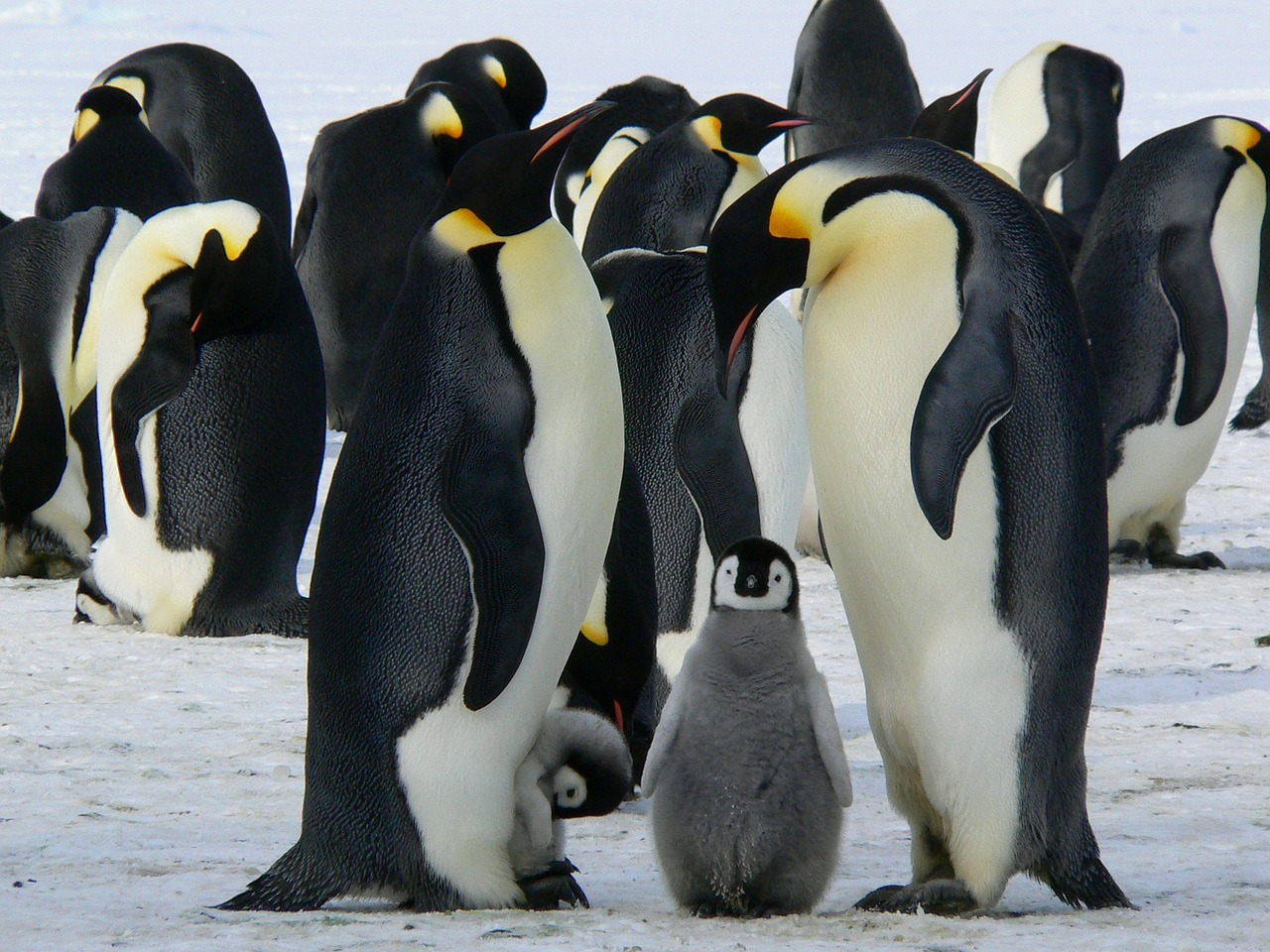
Size: Antarctica is the fifth-largest continent, spanning about 14 million square kilometers (5.4 million square miles) almost entirely within the Antarctic Circle.
Population and Density: Antarctica has no permanent residents, and the population varies from about 1,000 in winter to 5,000 in summer, consisting mainly of scientific research staff from various countries. Given its size, Antarctica’s population density is effectively zero.
Tallest and Lowest Points: The highest point on the Antarctic Continent is Mount Vinson, which stands at 4,892 meters (16,050 feet) above sea level. Conversely, the Bentley Subglacial Trench is the lowest point not only in Antarctica but also on Earth, at an estimated 2,540 meters (8,333 feet) below sea level.
Rivers, Lakes, and Deserts: While traditional rivers do not exist due to the freezing conditions, Antarctica has the Onyx River, a meltwater stream that flows westward through the Wright Valley during the summer. There are around 400 known subglacial lakes in Antarctica, with Lake Vostok being the largest and deepest, extending to a depth of 900 meters (2,953 feet).
Despite being covered in ice, Antarctica is technically a desert due to the low annual precipitation. The largest desert would be the whole continent itself.
Major Cities, Religions, Cultures, and Languages: Antarctica has no cities or permanent settlements due to the Antarctic Treaty that prohibits any military activity, mineral mining, nuclear testing, and nuclear waste disposal. It also supports scientific research and protects the continent’s ecozone.
Religion, culture, and languages are not applicable to Antarctica in a traditional sense since there are no indigenous inhabitants or permanent residents. However, the languages spoken at research stations depend on the nationalities of the scientists present.
Climate: Average Temperature and Rainfall: Antarctica is the coldest continent on Earth. The average temperature ranges from -10°C (14°F) on the coast in summer to below -60°C (-76°F) in the interior in winter. The continent is also extremely dry, receiving an average of 50mm (2 inches) of precipitation (usually snow) annually along the coast. Some areas receive less than 20mm, making them qualify as “cold deserts.”
Biodiversity: Despite the harsh conditions, a variety of wildlife has adapted to the extreme environment of Antarctica. Notable species include several types of penguins, seals, and birds. In the surrounding seas, there are diverse species of fish, whales, and krill. The terrestrial flora is limited to mosses, lichens, and a few flowering plants.
Economics and Industries
Unlike most other continents, Antarctica doesn’t have a traditional economy or industries due to the Antarctic Treaty’s restrictions. Signed in 1959, this treaty prohibits any military activity, mineral mining, nuclear testing, and nuclear waste disposal. It also supports scientific research and protects the continent’s ecozone.
Research: The primary economic activity in Antarctica is research. The continent is home to numerous research stations sponsored by countries worldwide, where scientists conduct research in fields like climatology, astronomy, and biology.
Tourism: While limited, tourism is a significant part of Antarctica’s economic activity. It’s carefully regulated to minimize environmental impact. Most tourists visit via cruise ships, where they can observe wildlife, visit research stations, and learn about the region’s ecology and geology.
Fishing: Regulated fishing occurs in the Southern Ocean surrounding Antarctica, particularly for species like Patagonian and Antarctic toothfish. The Commission for the Conservation of Antarctic Marine Living Resources oversees these activities to prevent overfishing and ecological damage.
Historical Highlights
Antarctica’s history is relatively short, dominated by tales of exploration and scientific discovery.
Early Sightings and Exploration: The first confirmed sighting of the continent wasn’t until 1820, although it had been hypothesized to exist for centuries. Early expeditions focused on whaling and sealing, but explorers soon started to venture into the interior.
Heroic Age of Antarctic Exploration: The late 19th and early 20th centuries saw a period of intensive exploration, known as the Heroic Age of Antarctic Exploration. Famous expeditions during this time include Roald Amundsen’s and Robert Falcon Scott’s race to the South Pole in 1911-1912.
Scientific Research and the Antarctic Treaty: The mid-20th century shifted focus towards scientific discovery. This period culminated in the Antarctic Treaty, which set aside the continent for peaceful scientific study.
Unique and Interesting Stories
Antarctica’s harsh conditions and remote location have led to numerous captivating stories.
Survival of Ernest Shackleton’s Expedition: One of the most famous Antarctic tales is the ill-fated Trans-Antarctic Expedition led by Ernest Shackleton in 1914-1917. Despite their ship being trapped and crushed in the ice, Shackleton’s leadership resulted in the rescue of his entire crew and has become a symbol of endurance and heroism.
Emperor Penguins: These unique animals are the only species to breed during the harsh Antarctic winter, and their survival techniques and parenting behaviors have been the subject of numerous documentaries and research.
Lake Vostok Discovery: In 2012, Russian scientists drilled into Lake Vostok, a large subglacial lake that had been sealed off from the world for millions of years. This exploration could potentially yield new insights into life forms that existed in prehistoric times.
Antarctica, a place of harsh beauty and incredible resilience, continues to captivate scientists, adventurers, and those fascinated by its icy allure. It is #5 on our list of Top 7 Largest Continents. It’s a crucial place for studying climate change, the Earth’s history, and the limits of life. Its untouched landscapes, unique biodiversity, and importance to global climate patterns make it an invaluable part of our planet.
#6: European Continent (3,930,519 square miles)
Europe, a continent of immense cultural, historical, and geographical diversity, has played a pivotal role in shaping the course of world history. As the cradle of Western civilization, it offers a rich tapestry of languages, cultures, religions, and natural beauty.
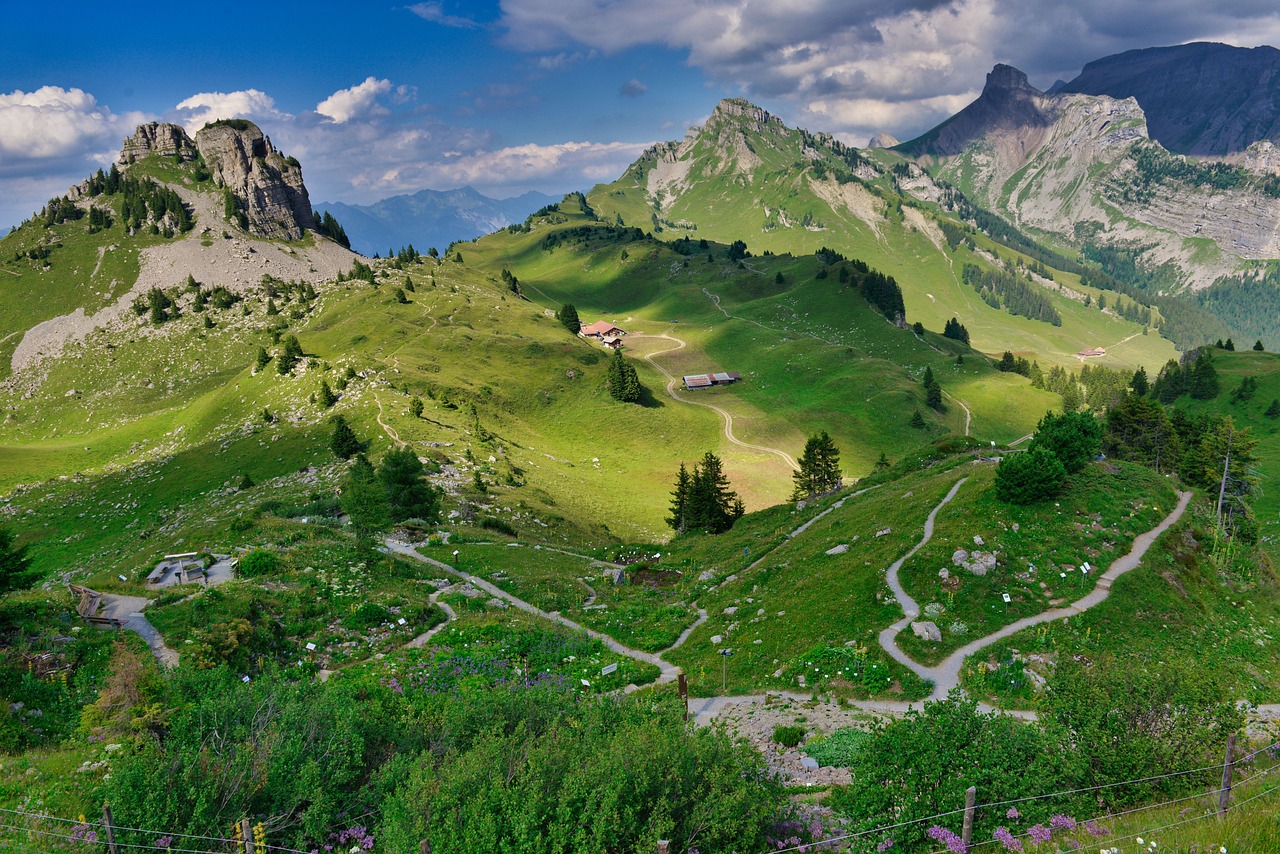
Size: Europe is the second smallest continent, covering approximately 10.18 million square kilometers (or about 3.93 million square miles), which is about 7% of the Earth’s total land area.
Population and Density: As of 2023, Europe has an estimated population of around 748 million people. The population density is approximately 73 inhabitants per square kilometer, making it one of the most densely populated continents.
Tallest and Lowest Points: The tallest point in Europe is Mount Elbrus in Russia, standing at 5,642 meters (18,510 feet) above sea level. It’s part of the Caucasus Mountain Range that marks the border between Europe and Asia. The lowest point is the Caspian Sea Depression in Russia at 28 meters (92 feet) below sea level.
Rivers: Europe’s rivers have been vital for trade, agriculture, and development. The Volga River, located in Russia, is the longest in Europe, stretching approximately 3,692 kilometers (2,294 miles). Although the continent’s rivers are not among the world’s widest, they serve as critical waterways, such as the Danube River that flows through 10 countries.
Lakes: Europe is home to numerous lakes. The largest by surface area is Lake Ladoga in Russia, covering around 17,700 square kilometers (6,800 square miles). Lake Baikal, located in Siberia and considered part of Asia, is the deepest lake in the world, but within European borders, the title goes to Hornindalsvatnet in Norway, with a maximum depth of 514 meters (1,686 feet).
Deserts: While Europe isn’t typically associated with deserts, it does host a few small desert-like areas. The Oltenian Sahara in Romania is the largest sand desert, spanning over 800 square kilometers (309 square miles).
Major Cities: Some of the world’s most influential cities reside in Europe. These include London, Paris, Berlin, Rome, and Madrid. Other significant urban centers include Moscow, the most populous city on the continent, Istanbul, and Athens.
Religions: Christianity, specifically Roman Catholicism, Protestantism, and Eastern Orthodoxy, is the dominant religion in Europe. However, there are also significant populations of Muslims, Jews, and an increasing number of people who identify as non-religious.
Cultures and Languages: Europe’s cultural landscape is incredibly diverse, shaped by millennia of history. This diversity extends to languages, with over 200 spoken across the continent. Major languages include English, Spanish, French, German, Italian, and Russian.
Climate: Average Temperature and Rainfall: Europe’s climate varies from the Mediterranean’s warm summers and mild winters to the subarctic and tundra climates in Scandinavia and Russia. The average temperature ranges from -1°C (30°F) in winter to 22°C (72°F) in summer. The annual rainfall varies widely, with the wettest parts receiving over 79 inches (2,000mm), and the driest areas, like the southern Iberian Peninsula, receiving less than 12 inches (400mm).
Biodiversity: Despite its relatively small size, Europe boasts significant biodiversity. From the brown bears of the Carpathians to the lynx in the Scandinavian forests, and from the rich birdlife of the Donana National Park in Spain to the flora and fauna of the Danube Delta, Europe’s biodiversity is a vital part of its natural wealth.
Countries: Countries within the European continent (by size) are Russia, Ukraine, France, Spain, Sweden, Germany, Finland, Norway, Poland, Italy, United Kingdom, Romania, Belarus, Kazakhstan, Greece, Bulgaria, Iceland, Hungary, Portugal, Serbia, Austria, Czech Republic, Ireland, Georgia, Lithuania, Latvia, Croatia, Bosnia and Herzegovina, Slovakia, Estonia, Denmark, Netherlands, Switzerland, Moldova, Belgium, Albania, Macedonia, Turkey, Slovenia, Montenegro, Kosovo, Cyprus, Luxembourg, Andorra, Malta, Liechtenstein, San Marino, Monaco, and Vatican City.
Economics and Industries
Europe’s economy, one of the largest and most diverse in the world, is a mix of traditional and modern industries. Its internal market, facilitated by the European Union (EU), is one of its defining economic features.
Germany: As Europe’s largest economy, Germany is renowned for its precision engineering and high-quality manufacturing sector, particularly in automotive and heavy industry.
United Kingdom: The UK boasts a diverse economy, with significant contributions from sectors such as finance, particularly in London – one of the world’s leading financial centers – as well as creative industries and manufacturing.
France: Known for its luxury goods, fashion, and wine industries, France also has a robust agricultural sector and is one of the world’s largest exporters of farm products.
Eastern Europe: Many Eastern European countries, such as Poland, Hungary, and the Czech Republic, have emerged as significant manufacturing hubs, with a focus on automotive and technology.
Historical Highlights
Europe’s historical narrative is complex and dynamic, punctuated by empires, wars, cultural transformations, and technological advancements.
Ancient Civilizations: The Greek and Roman Empires, originating in Europe, shaped the Western world’s political, legal, philosophical, and cultural frameworks.
Middle Ages: Marked by feudalism, the spread of Christianity, and the Crusades, this era also witnessed the Black Death, which significantly impacted European society.
Renaissance: Originating in Italy in the 14th century, the Renaissance was a period of intellectual and artistic flourishing that changed the face of Europe.
Industrial Revolution: Beginning in the 18th century, the Industrial Revolution, which started in the UK, transformed Europe from a largely agrarian society to an industrialized one.
World Wars and Aftermath: The two World Wars that defined the first half of the 20th century led to a reorganization of political boundaries, decolonization, and the emergence of the EU.
Unique and Interesting Stories
Europe’s rich cultural history has resulted in a plethora of fascinating stories:
The Legend of Dracula: The story of Count Dracula, inspired by the historical figure Vlad the Impaler, continues to captivate and terrify audiences. His home, Bran Castle, is a popular tourist attraction in Romania.
The Mystery of Stonehenge: Located in England, the prehistoric monument of Stonehenge, dating back to around 3000 BC, continues to be a subject of mystery and intrigue due to its unknown purpose and method of construction.
The Fall of the Berlin Wall: The fall of the Berlin Wall in 1989 not only represented the end of a divided Germany but also marked the beginning of the end for the Soviet Union and the Cold War.
CERN and the Discovery of the Higgs Boson: The European Organization for Nuclear Research (CERN), located near Geneva, is the world’s largest particle physics laboratory. In 2012, CERN announced the discovery of the Higgs boson, also known as the ‘God Particle,’ a breakthrough in understanding the fundamental laws of the universe.
Europe, with its extraordinary blend of cultures, languages, religions, and landscapes, continues to play a key role on the global stage. It is #6 on our list of Top 7 Largest Continents. Its rich biodiversity, vibrant cities, and distinct regions each tell a unique story, contributing to the continent’s grand tapestry. Understanding Europe’s intricacies and its impact on the world offers valuable insights into our collective history and shared future.
#7: Australia/Oceania Continent (3,474,919 square miles)
Australia/Oceania, the smallest continent, is a region that includes the continent of Australia, the Pacific Islands, and New Zealand. It is renowned for its isolation, leading to the evolution of many unique species of animals and plants. It’s home to the world’s largest coral reef system, the Great Barrier Reef, and other natural wonders like Uluru and the Daintree Rainforest. Cities like Sydney and Melbourne burst with vibrant cultures, while the Outback offers vast, rugged landscapes steeped in Aboriginal history.

Size: The combined land area of Australia/Oceania is approximately 9 million square kilometers (or about 3.5 million square miles), making it the smallest continental grouping that’s spread over a very large area in the Pacific Ocean.
Population and Density: The population of Australia/Oceania is around 42 million as of 2023. With most living in Australia and New Zealand, the population density is low overall but varies widely, being highest in Australia’s eastern regions and the various island nations.
Tallest and Lowest Points: The highest point in Australia/Oceania is Puncak Jaya (Carstensz Pyramid) in Papua, Indonesia, at 4,884 meters (16,024 feet) above sea level. The lowest point is Lake Eyre in Australia, which lies 15 meters (49 feet) below sea level when it’s dry.
Rivers and Lakes: The Murray River, Australia’s longest, is around 2,508 kilometers (1,558 miles) in length. The region is also home to many lakes, with Australia’s Lake Eyre being the largest by surface area, although it’s often dry. The deepest lake in the region is Lake Wakatipu in New Zealand, reaching depths of approximately 380 meters (1,247 feet).
Deserts: Australia is home to several major deserts, including the Great Victoria Desert, the largest in the region, spanning approximately 424,400 square kilometers (163,900 square miles). While not traditionally known for their heat, Australia’s deserts can become incredibly hot, with temperatures in the Oodnadatta and Marree areas reaching above 50°C (122°F).
Major Cities: Australia/Oceania’s major cities include Sydney, Melbourne, Brisbane, and Perth in Australia, Auckland in New Zealand, and Honolulu in Hawaii. Other significant urban areas include Canberra, the capital city of Australia, and Suva, the capital of Fiji.
Religions: Christianity is the predominant religion in the region, although significant minorities of other religions exist, including Buddhism, Hinduism, and Islam, particularly in areas with diverse immigration, such as Australia and New Zealand. Many Pacific Islanders and Aboriginal Australians maintain traditional spiritual beliefs.
Cultures and Languages: Cultures across Australia/Oceania are diverse, with significant influence from indigenous cultures, especially the Aboriginal people of Australia and the Maori of New Zealand. The region is multilingual, with English being the dominant language in Australia, New Zealand, and many Pacific Islands. Other languages include the many Aboriginal languages, Maori, and various Polynesian, Melanesian, and Micronesian languages.
Climate: Average Temperature and Rainfall: Australia/Oceania experiences a wide range of climates. Australia’s interior is dry with hot summers and mild winters, while the coasts are more temperate. The Pacific Islands have a tropical climate. Rainfall varies drastically, with the Pacific Islands receiving over 2,000mm annually, while central Australia often receives less than 250mm.
Biodiversity: The region is renowned for its biodiversity, particularly Australia’s unique wildlife like kangaroos, koalas, and wombats, as well as the diverse marine life of the Great Barrier Reef. The Pacific Islands are known for their vibrant coral reefs and species like the dodo bird.
Countries: Countries within the Australian/Oceanic continent (by size) are Australia, Papua New Guinea, New Zealand, Fiji, Solomon Islands, Vanuatu, Samoa, Kiribati, Tonga, Micronesia, Marshall Islands, Palau, Tuvalu, and Nauru.
Economics and Industries
The economic landscape of Australia and Oceania is varied and dynamic, with significant contributors including natural resources, agriculture, and tourism.
Australia: In Australia, the largest economy in the region, mining has historically been a substantial sector, contributing significantly to its GDP. Australia is a leading exporter of iron ore, coal, gold, and natural gas. The nation also has a robust agricultural sector, excelling in beef, wool, and wheat production. Moreover, Australia’s burgeoning technology and service sectors have driven substantial growth in recent years.
New Zealand: New Zealand’s economy is primarily based on international trade, with major exports including dairy products, meat, and wine. Tourism also plays a significant role in New Zealand’s economy, drawn by its stunning landscapes famously featured in films such as “The Lord of the Rings.”
The economies of the smaller Pacific Island nations rely heavily on subsistence farming, fishing, and remittances from overseas. Tourism is also an essential income source, particularly for Fiji, French Polynesia, and the Cook Islands.
Historical Highlights
The history of Australia and Oceania is filled with intriguing chapters, from the ancient cultures of its indigenous people to European colonization and modern development.
Aboriginal Australians are considered one of the world’s oldest continuous cultures, with a rich history dating back over 50,000 years. The continent witnessed European exploration in the 17th century, followed by the establishment of a British penal colony in 1788, which led to significant conflict and dispossession for the indigenous population.
New Zealand’s history features the unique Māori culture, which arrived in Aotearoa (New Zealand) around the 13th century. British colonization in the 19th century led to the signing of the Treaty of Waitangi, though its differing interpretations led to substantial Māori land loss and lingering socio-political issues.
The history of the Pacific Islands is marked by the rich tapestry of their Polynesian, Micronesian, and Melanesian cultures, influenced by European exploration, colonization, and more recently, their steps towards independence in the 20th century.
Unique and Interesting Stories
Australia and Oceania are a source of fascinating tales, from unique wildlife encounters to cultural traditions.
Australia is famous for its diverse and unique wildlife, with over 80% of its plants and animals not found anywhere else on the planet. Stories of tourists’ encounters with kangaroos, koalas, and the more fearsome saltwater crocodiles have been exciting parts of many visitors’ experiences.
One captivating tale from New Zealand is the legend of the haka, a traditional Māori dance performed at various events and known worldwide through the New Zealand All Blacks rugby team. The haka is a symbol of the cultural heritage and collective strength of the Māori people.
The Pacific Islands, with their vibrant cultures and stunning landscapes, offer many unique narratives. Samoa’s traditional tattooing, known as “tatau,” is a painful and sacred rite of passage for young men and women. The mysterious statues or “moai” of Easter Island continue to fascinate researchers, reflecting the ingenuity of its early Rapa Nui civilization.
Australia/Oceania, with its unique blend of cultures, languages, and ecosystems, contributes significantly to the world’s cultural and biological diversity. From Australia’s outback and unique fauna to the vibrant cultures of the Pacific Islands, the region is a rich tapestry of life. It is #7 on our list of Top 7 Largest Continents.
Continents and Maps
At the core of our understanding of the Earth’s geography are two vital concepts: continents and maps. These essential tools of geography serve as the basis for our comprehension of the world, its physical characteristics, divisions, and how we interact with it.
The Earth’s landmass is divided into seven large areas known as continents. From largest to smallest, these are: Asia, Africa, North America, South America, Antarctica, Europe, and Australia/Oceania. These continents are incredibly diverse, each hosting unique ecosystems, climates, and human cultures. Continents form the broadest divisions of land on Earth and are central to our understanding of global geography.
Maps are instrumental in visually representing the Earth’s surface. They translate the three-dimensional world onto a two-dimensional medium, allowing us to comprehend complex geographical information at a glance.
Continents and maps are intrinsically linked. Understanding the concept of continents allows us to make sense of the data displayed on maps. Conversely, maps provide a visual representation that makes the notion of continents, and the differences between them, clear and comprehensible.
Furthermore, the evolution of continents over time, known as continental drift, has been documented and studied extensively through maps. Maps depicting the hypothesized supercontinent Pangea demonstrate how our present-day continents were once a single landmass.
Learn more about Maps
- Topographical Maps: Representation of the physical features of a region or area.
- Contour Maps: Representation of the contours of the land surface or ocean floor.
- Raised Relief Maps: Representation of land elevations with raised features indicating landforms.
- Terrain Maps: Representation of the physical features of a terrain or landmass.
- USGS Topographic Maps: Representation of topographic features and land elevations based on USGS data.
- USGS Historical Topographic Maps: Representation of historical topographic maps created by the USGS.
- Watershed Maps: Representation of the areas where water flows into a particular river or lake.
- Elevation Maps: Representation of land and water elevations with high precision.
- Physical Maps: Representation of physical features of the Earth’s surface such as landforms, oceans, and plateaus.
- Bathymetric Maps: Representation of the topography and features of the ocean floor.
- NOAA Maps: Representation of atmospheric, oceanographic, and environmental data by NOAA.
- Nautical Maps: Representation of the underwater features and depth of an area for navigation purposes.
- Geologic Maps: Representation of the geologic features of an area such as rock types, faults, and folds.
- Satellite Maps: Representation of earth from high-definition satellite imagery.
Contact us today to learn more about our services and how we can help you achieve your goals.
